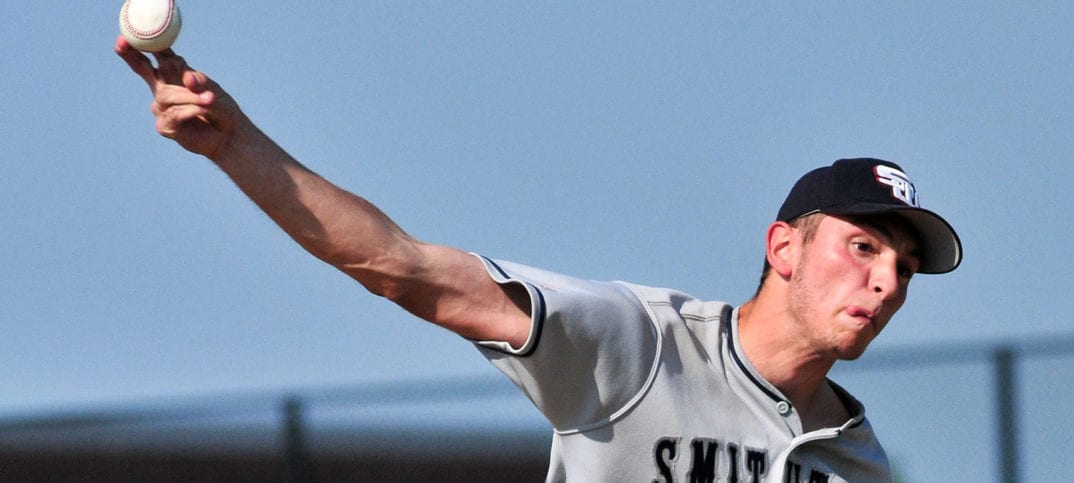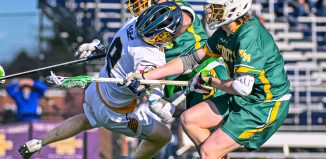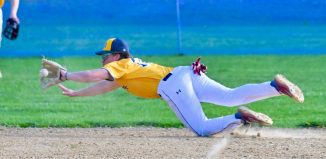By Desirée Keegan
With elbow injuries running through all levels of baseball at an almost epidemic-like rate, baseball coaches in New York will now have state mandated standards to adhere to in handling their young pitchers. Although a step in the right direction, some coaches don’t think the new rules go far enough.
The New York State Public High School Athletic Association unveiled its first stab at guidelines coaches and their pitchers need to follow last December. The regulations include pitch counts — there’s now a cap of 105 in a single day at the varsity level — and nights of rest needed for various pitch-count tiers, before a pitcher can return to the mound.
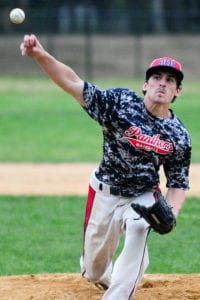
“Action by the NYSPHSAA Executive Committee is a giant step forward in doing our part to protect and support our student-athlete baseball players,” state baseball coordinator Ed Dopp said in a statement. “We will continue to monitor and adjust the pitch-count rules in an attempt to always improve opportunities for our student-athletes and address safety as best we can.”
Pitch counts are also in place for junior varsity and middle school pitchers. Junior varsity players cannot exceed 85 in an outing.
Four nights of rest are mandatory for varsity players throwing between 96 and 105 pitches. Three nights are required for those throwing between 66 and 95 pitches; two for 31 to 65 pitches; and one for up to 30 pitches. The limits change in the postseason, where the maximum pitches allowed at the varsity level jumps to 125.
“These pitch-count rules are a Band-Aid on a problem that is 2 feet wide,” Ward Melville head coach Lou Petrucci said. “What makes these doctors think that it’s alright for a young kid to throw three days in a row, while it’s under a certain amount of pitches, but Mariano Rivera, who is a trained professional, can’t do it? Big leaguers don’t pitch on the third or fourth day.”
Petrucci also pointed out the fatigue pitchers endure when throwing a particularly strenuous frame, say 30 pitches in one inning, noting the rules don’t take that into account. He also had a problem with the fact that freshmen and seniors, all adhere to the same rules.
“You can bring up an eighth-grader and he can throw 105 pitches on varsity — it doesn’t make much sense,” Smithtown East head coach Ken Klee said. “It should be about development.”
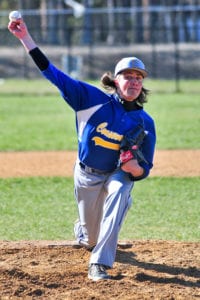
Another imperfection is pitching on any mound other than in a high school game is not taken into consideration — when a student-athlete practices, warms-up, if he takes part in an outside league, travel team or showcases.
“One of the biggest criticisms is the amount of outside baseball that kids play,” Port Jefferson head coach Jesse Rosen said. “It’s difficult to keep track of, but it’s about communication. I’ve encouraged kids to ask their travel coaches to communicate with me. It’s going to be a necessity.”
Centereach head coach Mike Herrschaft said the speed at which a pitcher throws should also be taken into consideration.
“There’s a correlation between how fast they throw and the rest they need,” he said. “If I had a kid throwing in the 70s and everything’s healthy I might feel comfortable with them throwing 105 pitches and going on the sixth day, where if I had a kid throwing 90 mph, I’m never comfortable with them pitching on the sixth day.”
For some schools, especially those in the lower leagues, the pitchers are typically the best player on the team and play multiple positions when they’re not on the mound. This too can wear out an arm, and isn’t measured in the first round of rules.
“I never let my pitcher catch or my catcher pitch,” Herrschaft said. “Those have been my standards, especially more recently with the increase in Tommy John surgery and concerns.”
For schools like Kings Park, they need to have athletes play multiple positions. But most coaches try to limit their throwing in one way or another, or give those players more rest.
“To totally get them out of the lineup I think it’s impossible,” head coach Mike Luzim said. “It would negatively impact the normal day-to-day lineups and getting a team prepared to win.”
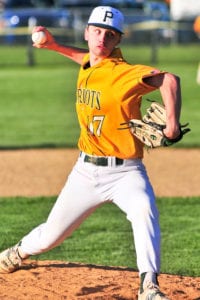
Other new rules include if any pitcher at any level reached the count limit in the middle of an at-bat, he will be allowed to finish that hitter; both teams are required to track pitches on the official NYSPHSAA form and confirm after each inning; and at the game’s conclusion, a pitch count form will be signed by both team’s coaches or designated representatives, and a record will be used to determine which pitchers are available for future games.
“There’s room for manipulation,” Klee said. “It should be put in a database where everyone can see it.”
An app called GameChanger is one that tracks this, and other stats, and is used by many coaches across Long Island, like Klee and Luzim.
“Virginia and Kentucky both mandate that high school teams use GC for this very reason,” Game Changer representative David Kennedy said. “We would love it if New York did the same. It would streamline the process and allow each team to oversee pitch counts for players.”
Luzim said it could eliminate discrepancies that could make a difference throughout the season.
“Right now, everything goes by the home book, so if there were a number that was off by one or two pitches it goes back to the home book, and what if the home book is off by one pitch? And that’s a 95 instead of a 94? That could change the number of days and that could lead to problems or arguments,” he said. “I think there will be a million different scenarios that come up this year that will have to be looked at.”
Other tricky scenarios include a game postponed due to darkness and doubleheaders. Currently, when it comes to doubleheaders, a hurler competing in the first game cannot pitch in the second.
“It would be reasonable to have a kid close the end of the first game and then maybe pitch a couple of innings in the second game,” Rosen said.
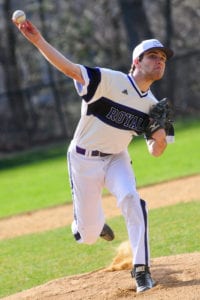
Klee disagreed.
“I think that if they throw once that day they shouldn’t come back — it’s dangerous,” he said. “I would be an advocate for making it even stricter, meaning less pitches and more rest.”
He also doesn’t like the wording of a “nights” rest, which was changed from a days rest. To him, there’s a loophole there that could count the night after the game as all the rest that’s needed.
Luzim said he’d like to see a cap on the amount of pitches per week.
“You can still end up throwing in a kid who pitches 95 pitches, right below the last level, and they could come back on the Thursday game and throw 105 pitches on that Thursday,” he said, “Then, they could really come back on that following Monday. So they could really end up throwing over 300 pitches in one week.”
For now, the coaches are just happy to see New York is trying to regulate the game to protect players.
“I get that they’re trying to address the problem, but we need to address the problem with more substantive thinking,” Petrucci said. “I think people today don’t trust the coaches. We’ve been doing this quite a while. Us coaches care about these kids, and we’re going to continue to push for their safety.”

